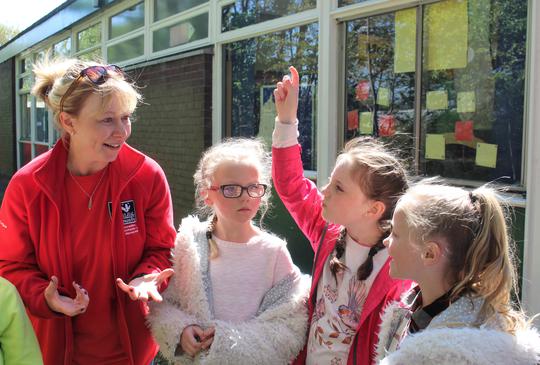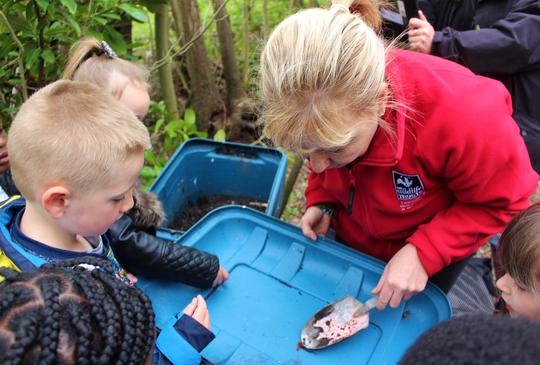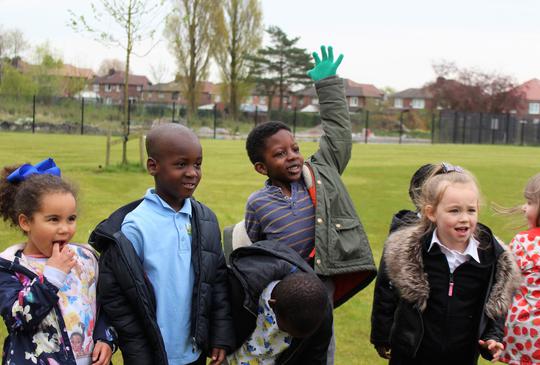
The Complete Beginners Guide to ‘Forest Schools’
So, what is ‘Forest School’?
Forest School is a child-centred, play-based ethos used to engage children back with the natural world.
Forest School started in 1993, when a group of nursery nurses took a trip to Denmark and experienced what they called open air culture or ‘frulitsliv’. This is an ethos which encourages pre-schoolers to learn through outdoor play.
They then took the idea back to the UK, set up their own Forest School, and trained other practitioners along the way. Local authorities have adopted the concept over the years, with conferences held, networks adjoined, grants provided and standardisations put in place by the Forest School Association.
Since 1995, 30,000 people are estimated to have started Forest School training. That number is ever increasing, and in a country which has 60% of its wildlife in decline, we can do with all the help we can get.
Where does Lancashire Wildlife Trust fit into this?
Back in 2009, our Education Team became qualified practitioners and trainers and we established our own Forest School sessions.
In 2015 the People’s Postcode Lottery/Wildlife Trust Initiative was set up, which resulted in Lancashire Wildlife Trust being awarded an initial 66K towards our Forest School work. In recent years this has been near doubled to 100K and has enabled us to expand our work across sites in Manchester, Lancashire and Merseyside.
We work with a number of different year groups (EYFS, KS1, KS2) within each school, across 4-8 schools per year, offering a 6-week programme for each group.
This cumulatively has enabled a reach of 600 children per annum. We also help to sustain the legacy of Forest School by training three members of staff per school, up to Level 3 Forest School Practitioners.
We also have a school grounds service, through which we design and build woodland areas within the school. We run sessions both on local nature reserves and within school grounds, promoting activities that elicit living a 'wilder' lifestyle.

What do the experts say?
In 2012, research by Liverpool John Moore’s University examined children’s perception, knowledge and experiences of play before and after a 12-week programme of Forest School.
The research found Forest School had a positive influence on the children, such as stimulating imaginative play outside of school; (particularly in boys); enhancing leadership and confidence skills; overcoming weather as a barrier to outdoor play; and developing an appreciation and respect for wildlife.
Other research from the Social and Economic Research Group in Surrey explained that Forest School had a positive impact on children in terms of confidence, social skills, language and communication, motivation and concentration, physical skills and knowledge and understanding.
How to get involved…
There are a number of ways to get involved in Forest School, and lots of resources available too.
Thanks to support from players of People’s Postcode Lottery, we have opportunities across Manchester and Liverpool to deliver fully-funded Forest School sessions/training in schools that lack access to green spaces.
If you are not part of an educational facility, we also run independent courses at Brockholes and The Hive. Similar schemes are also run across various other Wildlife Trust’s, so if you are a little further afield, get in touch with your local Trust and enquire about Forest School activities.
Tips for planning your first session
The Forest School ethos is all about letting children explore their own enjoyment and interest in nature, so keep an open mind because all children are different.
“Know your group, and allow the children to inform the themes and topics, even to the smallest detail of activities," said Vicki McDermott, Senior Project Officer at Lancashire Wildlife Trust. "Sessions need to be based on their interests, as you are facilitating their learning, rather than teaching.”
Generally, the key is to try not to get carried away with planning. It's important to know your site well and cover all of your health and safety bases before delivery (this includes getting the children to risk assess the area with handmade hazard signs).
A great first game we like to play is called ‘sticky feet’. This works by rounding up the children in a circle, connecting each other’s feet together, saying ‘sticky feet’ and counting how many children are in the group. This is effective on a number of levels. It introduces counting skills, keeps a regular head count and is a way of getting everybody’s attention without using a whistle, shouting, or resorting to any other method that goes against the Forest School ethos. It’s also lots of fun!
If you would like any further information, please contact Emma Ackerley, Assistant Communications Officer at Lancashire Wildlife Trust at eackerley@lancswt.org.uk, or visit the Lancashire Wildlife Trust website.

Useful Links & Contact Details
Our main Forest School webpage can be accessed here.
The 21 best ideas about Forest School on Pinterest
Join the I Love Forest School Facebook group
Visit the Forest School Association website here
All images courtesy of Emma Ackerley.
Contributor Profile
Emma recently joined Lancashire Wildlife Trust, having worked in international conservation in Fiji & South Africa, predominantly in behavioural ecology research for The University of Zurich, and conducting her own research on human-wildlife conflict in Cape Town, South Africa. She has also worked as a Website Content Creator for Conservation-Careers previously, and currently works on communications for the Trust's Forest School project, as well assisting with the wider Trust’s comms and marketing. She has a passion for primate conservation, digital marketing and communications.



